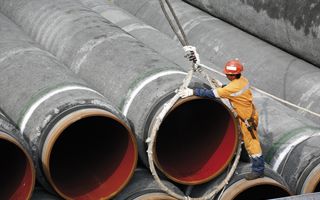(Finance) – Moody’s has improved the long term corporate family rating (CFR) of Saipem to “Ba2” from “Ba3”, with theoutlook that remains”positive“. The rating increase reflects the improvement in Saipem’s operational performance, which translates into adjusted EBITDA margins reaching approximately 8% in 2023 compared to 5.3% in 2022, contributing together with revenue growth to the reduction of adjusted gross debt/EBITDA ratio at 3.4x by the end of 2023 compared to 7.5x a year earlier, it said in a statement.
The improvement in operational performance was supported by strong demand for services of Saipem united with progressive completion of loss-making contracts, especially in the offshore wind sector. For the next 12 to 18 months, Moody’s expects Saipem’s EBITDA margins to reach low double digits as it executes an increasing share of work from new leads with a higher margin profile and reduces the debt/EBITDA ratio towards 2 .5 times compared to the same period.
The end markets for Saipem’s engineering and project management capabilities continue to be very strong, as reflected in its order book which will rise to €30 billion in 2023 from €24 billion in 2022. Since more than 90% of revenues of the group in 2024 and 70% in 2025 are covered by the existing order book, the Revenue visibility is strong but rigorous project execution is critical to avoid cost overruns and ensure margin improvements.
Furthermore, all the drilling ships of the company are currently contracted at very attractive rates (most are contractual until at least 2025), which Moody’s Ratings estimates will contribute around €300 million in EBITDA per year over the next two years.
The rating takes into account the company’s sizeable and diverse order book and its strong market position as a leading E&C company in the oil and gas sector, particularly in the offshore segment and the LNG sector. Saipem is successfully carrying out its transformation plan and has implemented a asset light strategy chartering a significant number of vessels instead of purchasing them to carry out offshore work. This provides the company with a high degree of cost flexibility should the current strong market environment for oil and gas spending reverse. At the same time, it structurally reduces the company’s profitability compared to the last production cycle due to the higher costs of renting ships for a shorter period than owning them.
